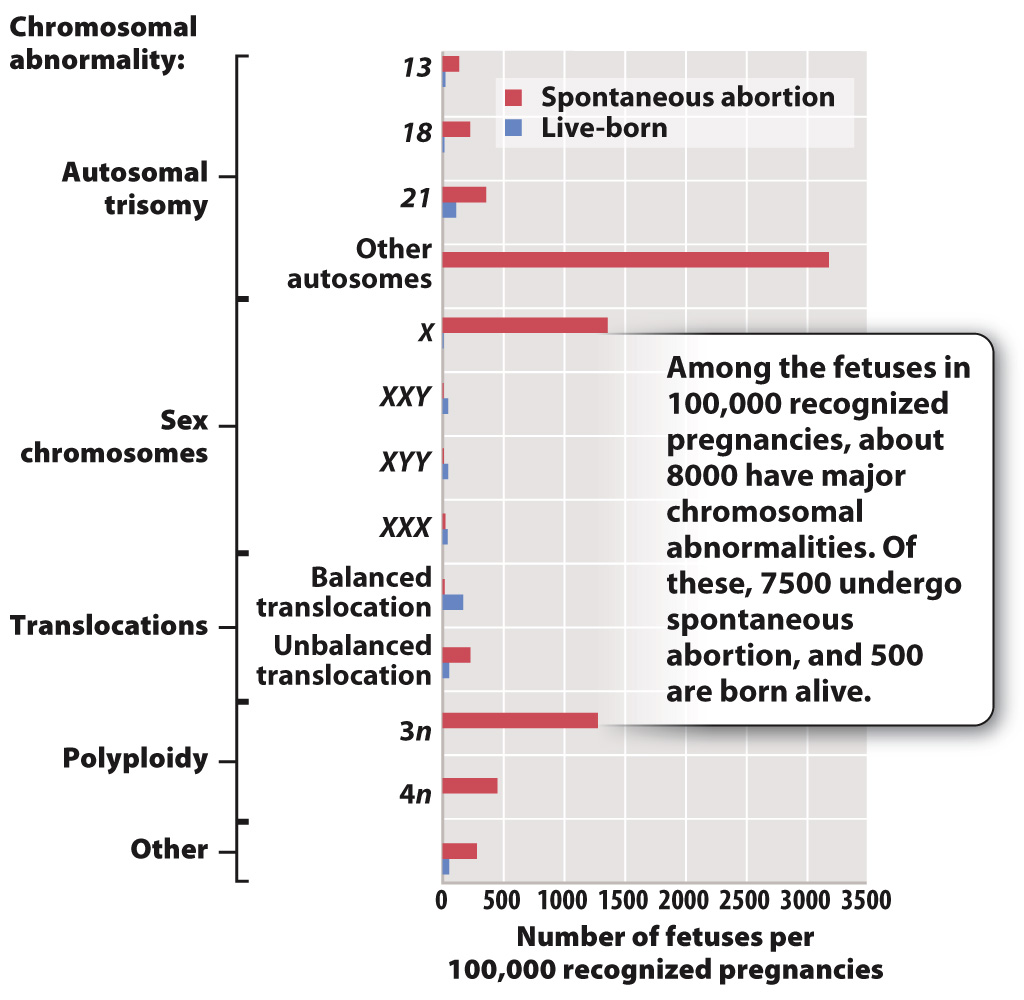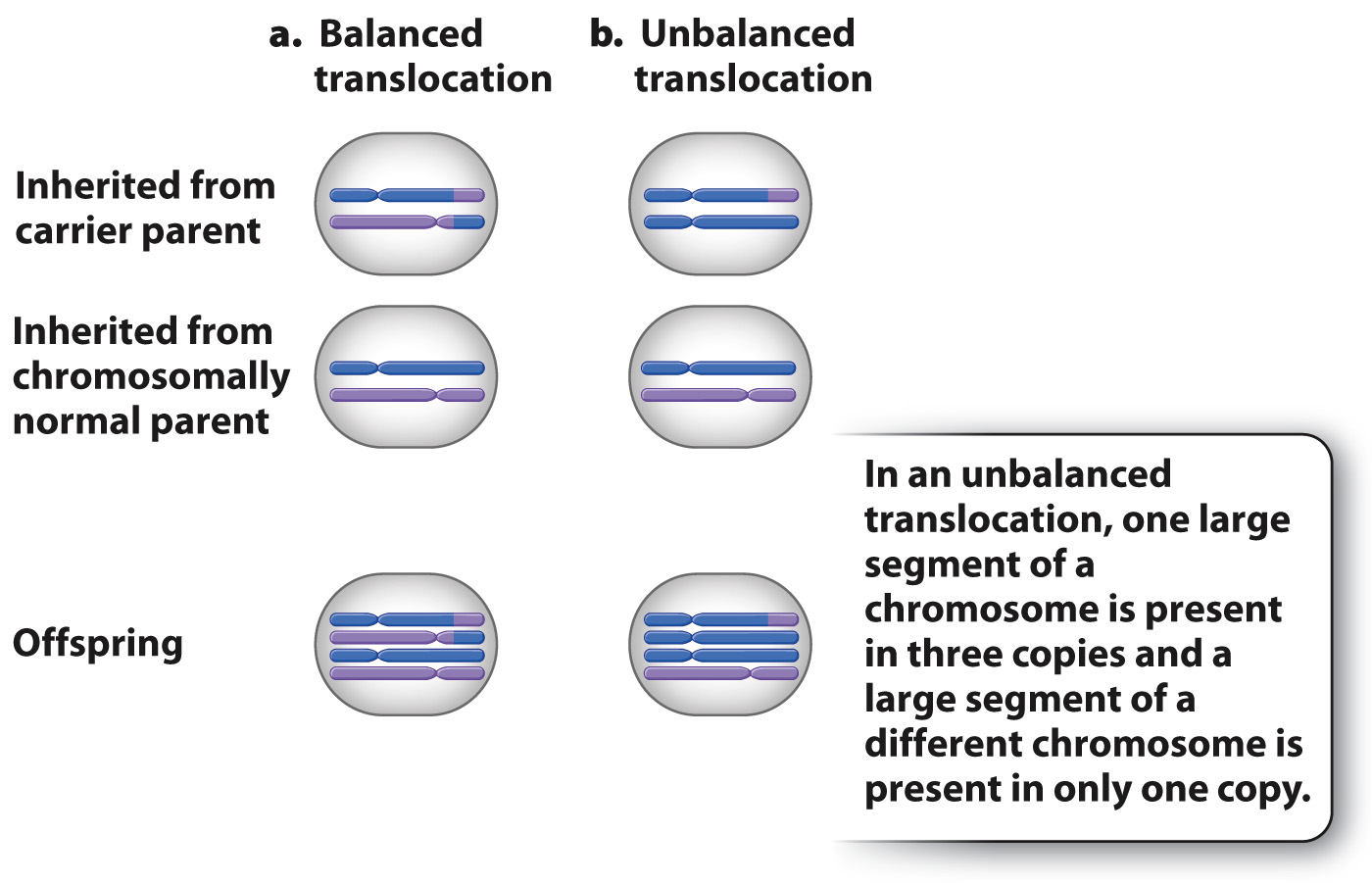Nondisjunction is a major cause of spontaneous abortion.
Trisomies and the sex-

The relative proportions of some of the major chromosomal abnormalities in spontaneous abortion are shown in Fig. 15.14. The bars in red represent recognized pregnancies that terminate in spontaneous abortion, and those in blue represent those in which the fetus develops to term and is born alive. Note the large number of autosomal trisomies, none of which (with the exception of trisomies 13, 18, and 21) permits live births. Even among these, about 75% of fetuses with trisomy 21 undergo spontaneous abortion, and the proportions are even greater for trisomies 13 and 18. The 45, X karyotype also very infrequently results in live birth.
A surprisingly large number of fetuses that undergo spontaneous abortion are triploid (with three complete sets of chromosomes, 69 altogether) or tetraploid (four complete sets, 92 altogether). These karyotypes usually result from a defective spindle apparatus and failure of cell division in anaphase. When this occurs in meiosis, the result is a diploid gamete and a triploid fertilized egg (Fig. 15.15a). It can also occur after normal fertilization, when the diploid egg goes through mitosis but the cells fail to divide after the DNA is replicated. The result is a tetraploid (Fig. 15.15b). Many spontaneous abortions result from an unbalanced translocation (Chapter 14), in which only part of a reciprocal translocation (along with one of the nontranslocated chromosomes) is inherited from one of the parents (Fig. 15.16).


Altogether, about 15% of all recognized pregnancies terminate with spontaneous abortion of the fetus, and roughly half of these are due to major chromosomal abnormalities. This number tells only part of the story because embryos with a missing autosome are not found among spontaneously aborted fetuses. These must occur at least as frequently as those with an extra autosome because both are created by the same event of nondisjunction (see Fig. 15.12). The explanation seems to be that in fertilized eggs with a missing autosome the abortion occurs shortly after fertilization, and most cases are not recognized.